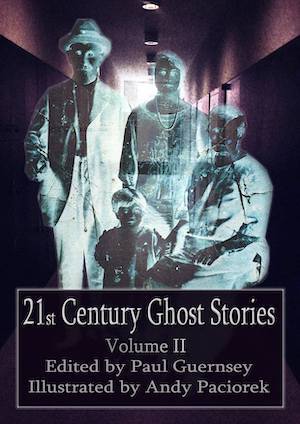Anne Boleyn, The Headless Horseman, And Roland: A Long Tradition Of Decapitated Phantoms
In 1978, when the late singer-songwriter, Warren Zevon, penned the lyrics to his haunting (and haunted) musical ballad, “Roland The Headless Thompson Gunner,” he was adding the most recent strand to a braid of literature and folklore that Western storytellers first began weaving hundreds of years ago.
The Roland character in Zevon’s song is a Norwegian mercenary soldier fighting in Africa who, at the behest of the CIA, is betrayed and murdered by his comrades. Post-death he returns as a revenant—a headless one, due to his having been decapitated by a burst of automatic gunfire—and he wanders the earth seeking revenge.
Of course, the most well-known headless ghost—also a revenant—is Washington Irving’s Headless Horseman, who appears in the 1820 story The Legend of Sleepy Hollow by American author Washington Irving.
The Legend of Sleepy Hollow takes place in and around a rural village in upstate New York. But according to British author and academic Owen Davies, in his book, The Haunted: A Social History of Ghosts (New York: Palgrave Macmillan, 2007), not only can Europe boast a number of its own headless horseman tales, but the entire theme of “acephalous” ghosts got its start on that continent, and has always been especially popular in Britain. A small part of the explanation is that for centuries, British persons of noble birth convicted of serious crimes were executed by beheading (while low-born criminals were hanged). The most famous example is that of Anne Boleyn, the English queen unjustly beheaded on the orders of her husband, Henry VIII; her headless sprit is said to haunt the Tower of London, where her execution was carried out.
However, Davies tells us that the preoccupation with headless ghosts can also be explained at least partially by questions and anxieties among christians concerning the day of resurrection, and the ultimate fate in the afterlife of souls whose physical bodies were dismembered in life or whose remains were scattered after death.
Davies also touches on a a couple of psychological theories, including one claiming that, because in the living human body the head is thought to serve as a house for the soul, headlessness in a ghost symbolizes the fact that spirit and body have been forever separated. Ultimately, however, he finds none of these explanations to be fully satisfactory, and he concludes his passage on headless ghosts by calling them “. . . an enigmatic recurring motif.”
Davies also tells us that in Britain tales and legends of the acephalous ghosts of animals abound, including accounts of headless bears, horses, dogs, and pigs. He adds that the literatures of ancient Greece and Rome make almost no mention at all of ghosts who have no heads.

